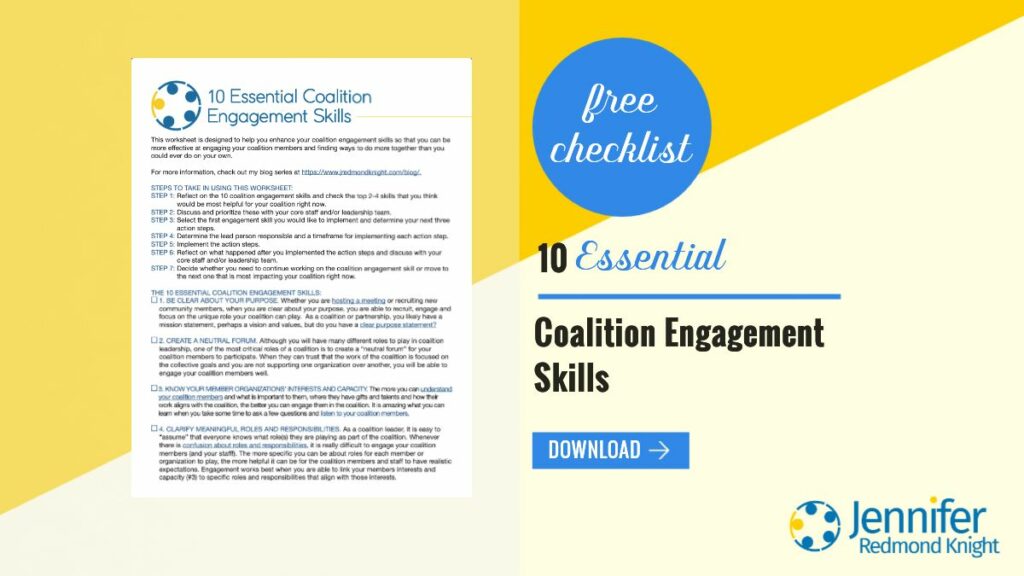In every meeting, you will have people who are more inclined to talk, share and provide their perspective or feedback and you will have others who listen more and talk less. If we have been meeting with a group for a long time, we develop a group culture where we may expect our colleagues to respond in specific ways. We may also assume that only a few people will do the talking and others will listen. Whether you are someone who naturally listens more than you speak or whether you are someone who does most of the talking when given an opportunity, actively listening supports the communication and coordination needed to effectively work together. Join me this week as I provide three ways that you can encourage active listening in your coalition, partnership or team.
Model.
Whether you are leading or participating, you have an opportunity to model active listening skills. You can turn on your video and genuinely pay attention to what is being said. You can take notes on what you are hearing from others and ask questions to better understand their perspectives. Although you may have a lot you want to say, when you practice actively listening rather than always saying what is on your mind, you are giving your colleagues and partners an opportunity to be heard which encourages participation and engagement. If one of your goals is to get people to work together, then listening is a great way to honor the perspectives of multiple people so that you can work together.
Pause.
When we are in a meeting, especially a virtual meeting, allowing time for silence can be incredibly uncomfortable. However, during these moments of pause, you give people time to think about what they may want to share and give people time to continue listening to what they just heard. When we pause, we also create space for more people to feel comfortable sharing their perspectives. By moving quickly to the next question or to the next topic, we cut off a listening opportunity by catering to the extroverts who are often quick to speak (and may be slow to listen!). As you practice pausing, count for at least six seconds before moving to the next topic, question or participant. Depending upon the meeting, you may need to pause on decision making because you have not yet been able to really listen and understand one another’s perspectives. You may need to make a decision via email, a survey or during your next meeting so that you have given the group enough time to actively listen.
Summarize.
One of the best ways to demonstrate actively listening is to summarize the discussion and check in with the group that you heard them correctly. When we summarize the discussion, we are able to highlight multiple perspectives and provide similarities and differences in those perspectives. By summarizing, we are able to confirm with the group that we heard which can help the group move forward together. Depending upon the setting or the time remaining in the meeting, you can offer the group to correct or clarify your summary of the discussion. If there is no time at the end of the meeting for additional discussion, you can offer the opportunity for participants to provide feedback after you have distributed meeting notes. When participants realize that their perspectives have been heard, they are more likely to continue to engage with your coalition and actively participate in future efforts.
What about you? What are some of the ways you encourage actively listening during meetings?
If you would like more practical ideas on how to engage your coalition, check out my free 10 Essential Coalition Engagement Skills resource.

Photo by saeed karimi on Unsplash
